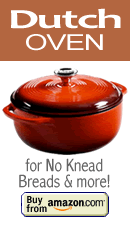http://vimeo.com/106838504
Sourdough foods are the predecessor to modern-day yeast breads. This is the way our ancestors and traditional cultures gave rise to breads.So just what is “Sourdough Starter”? Here is the official definition. “A sourdough starter is a symbiotic culture of “wild” yeasts and lactic acid-producing bacteria living in a mixture of flour and water. The yeast and bacteria share available nutrients rather than compete for them.” How does the Sourdough Starter Work? Lacto-bacilli bacteria in the sourdough eats the carbohydrates and proteins in the dough, producing acids and CO2 which bubbles throughout the bread dough giving it rise. Sounds simple enough right?! One of these major acids produced is lactic acid. Lactic acid along with other acids in the bread changes the pH of the sourdough creating an environment that pathogenic harmful bacteria can’t live in. So while the sourdough mixture is culturing on the counter for 8, 12, 16 or more hours it is protecting itself and making an environment that botulism, E. Coli and other harmful bacteria can’t grow in. Lactic Acid Lactic acid produced during the culturing period allows 4 great benefits to happen in the foods.
I think you will agree with me that sourdough cultured products sure have a lot to offer us and now you can see that wheat is not the enemy that it has been portrayed to be if it is correctly cultured as our ancestors have done for 3,500 years. It appears modern society is the only one that did not get the news. Continue to Lesson 4 – Feeding & Storage —>
|
|
...obtaining better health with God foods
Disclaimer
The nutritional advice provided through this website is intended to educate individuals about diet and a healthy lifestyle approach. No advice provided is intended to diagnose, cure, or prevent any disease; or be construed as a substitute for medical attention. Individuals with a specific medical condition or concern should seek advice from a physician.
Copyright © 2016 Cooking God's Way · License & Usage · Disclaimer & Privacy Notice · Shipping & Refunds · Affiliate Program




